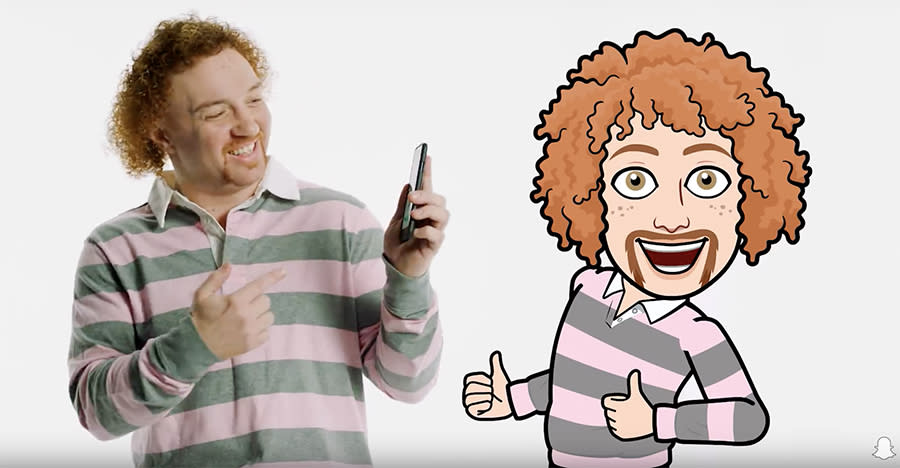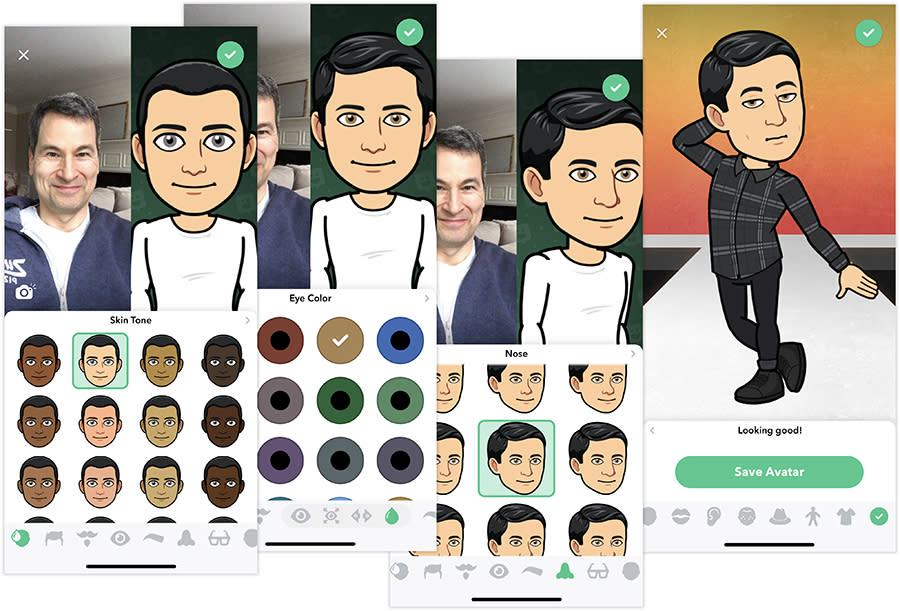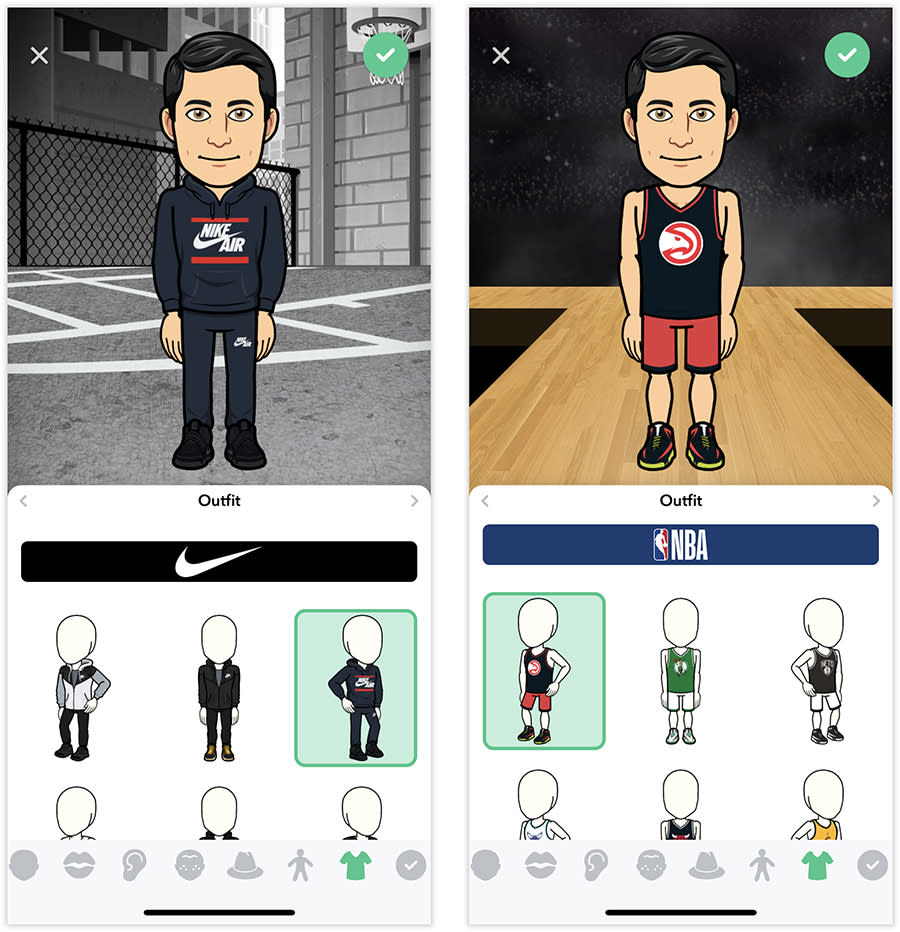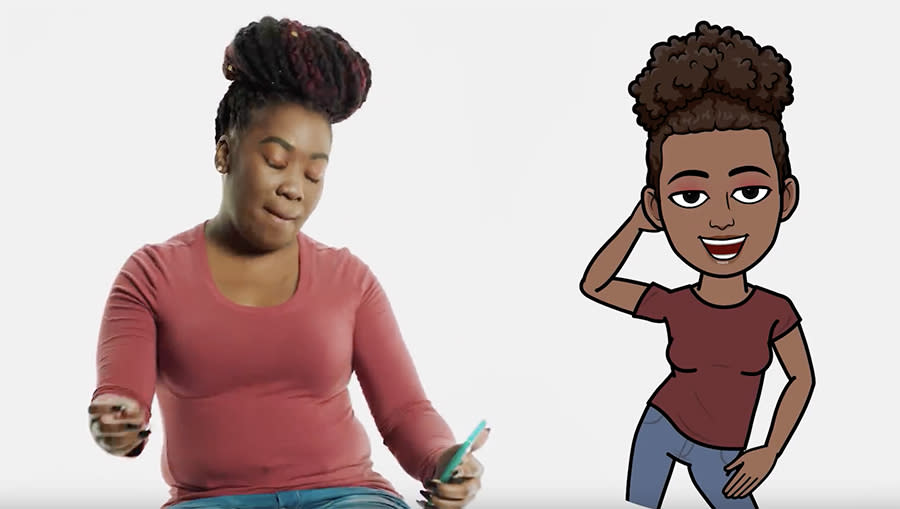Bitmoji is this week's David Pogue's Rated:App
Welcome to David Pogue’s Rated:App, a new video series. Each week, I’ll install whatever the No. 1 bestselling app is (on the iOS or Android store) and review it, to save you the effort in case it’s a turkey. If you’re viewing this on your phone, in an app or Facebook or Twitter, the video plays vertically — it fits your screen exactly, so you can see what it’d look like if you were running the app yourself!
This week, the No. 1 bestselling app — on both the Apple and Google Play app stores — is Bitmoji. It’s a free app, bought by Snapchat last year for $100 million, that’s intended to jazz up your texting life. Instead of sending the same generic, tiny pictures that everybody else sends, you can send giant ones, featuring a cuter, cartoon version of you.

When you first open the app, it guides you through the process of designing your own avatar. It auto-draws a basic cartoon of you based on a photo you take; from there, you can fine tune every conceivable aspect of yourself: hairstyle, hair color, eye color, eye shape, glasses, eyebrows, nose, ears, jawline, forehead/undereye wrinkles, clothing, body type, and so on. (It’s a lot like building your Mii on the Nintendo Wii, if you remember that.)
You walk through about 20 screens, fine-tuning your avatar.

What you wind up with doesn’t look exactly like you, but it’s close enough that your texting friends will get the point.
Later, when you’re in mid-chat, you tap the Apps icon (iOS 11) and then the Bitmoji icon — or, on Android, you use the keyboard switcher to choose the Bitmoji keyboard.
What you see now is a universe of little drawings, representing thousands of typical texted comments and sentiments: “I’m sorry,” “See you soon!”, “Thank you,” “I miss you,” “What up?”, and so on. You’ll find internet memes in there, compliments and reactions. Each one features you in a charming or goofy pose, delivering that message.
You can browse them by scrolling, or you can do a search for keywords. Tap the cartoon you want, and boom — it’s in the texting box, ready to send.

The business model
Bitmoji is free, which is a little amazing. So how did the company make money (before Snapchat bought them)? Well, as you play with it, you’ll sometimes see what are obviously sponsored cartoons— as you choose your clothing, for example, you’ll find options from Nike and Adidas. And you’ll sometimes see cartoons that have tie-ins to current movies.

Man, if that’s what it takes to make this software free, I say hooray. Who cares? If you don’t want to be a cog in the great consumer-marketing machine, you don’t have to use them.
What’s not to like
I have no complaints about the software itself. None. It’s super well-designed, and adds something truly novel to the communications process.
The primary objection you might have is the very concept: sending adorable little cartoons of yourself. You might find that idea cloying, or vain, or cutesy. You might not want to do what everyone else is doing, as a big millennial herd, on principle.
And you might think that bitmojis make lazy people even lazier, because they let you send canned sentiments instead of composing them yourself. (Please, please do not send a Bitmoji “I’m sorry” when someone has died.)
When used judiciously and creatively, though, Bitmoji can be delightful. Whenever someone sends me one that I haven’t seen before, a witty drawing that perfectly captures some offbeat conversational situation, it’s good for a grin.

David Pogue, tech columnist for Yahoo Finance, welcomes non-toxic comments in the Comments below. On the Web, he’s davidpogue.com. On Twitter, he’s @pogue. On email, he’s [email protected]. You can sign up to get his stuff by email, here.
Read related:
